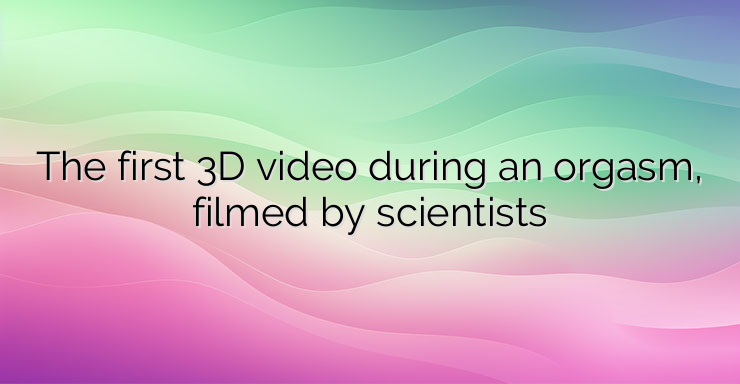For the first time in the history of science, scientists have recorded a 3D video of what happens in the human brain during an orgasm, in the case of a woman. The video presents the order in which the areas are activated during the climax of sexual pleasure. Understanding how the brain reacts to one of the most pleasurable sensations could be crucial to clarifying the causes leading to conditions such as depression and addiction, in which motivation and desire deviate from the acceptable norm. Lead researcher Barry Komizaruk, a professor of psychology at Rutgers University, recorded the brain activity of several women who were able to reach orgasm while masturbating in an MRI. The expert found activity in more than 80 areas in the brain, including the prefrontal cortex, which, according to Dutch scientists, remains inactive during orgasm. Differences in studies may be due to the scanning technique. Furthermore, in the study conducted by the Dutch scientists, the sexual stimulation of the ladies was induced by their partners. In this sense, when orgasm is induced by masturbation, the control characteristics of the prefrontal cortex are involved in the whole process. The video shows that the first areas to be activated are the sensory regions in the brain “responsible” for the genitals. The next region that “lights up” is usually activated when pain is felt. This means that there is a “holding” interaction between orgasm and pain. During peak sexual pleasure, women are much less sensitive to unpleasant sensations. Komizaruk notes that facial expressions during orgasm are often indistinguishable from those induced by pain. According to him, this can be explained by the activation of this area in the brain. NEWS_MORE_BOX Activity was also seen in the amygdala, which, in addition to processing fear-related information, is also involved in all kinds of emotions. It can provide some of the “hot” emotions during orgasm. Then the hippocampus is activated, it processes the memories. Its role can be considered as “recording” the emotion. This area is probably also responsible for sexual fantasies, which often help to reach orgasm. The next area is the prefrontal cortex – it is associated with planning, abstract thinking and behavioral control. Brain activity continues through the region responsible for movement and muscle tension, followed by the hypothalamus. The hypothalamus releases oxytocin, known as the “love hormone”, which has a role in social and emotional bonding. Last, the pleasure center in the brain is activated, releasing dopamine. Then the brain “shuts down.” The video was presented at the Neuroscience Conference in Washington.


Leave a Reply